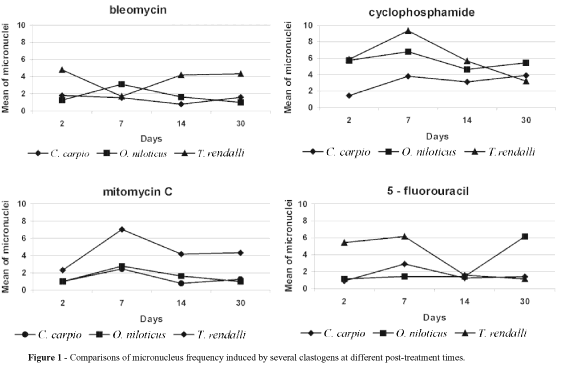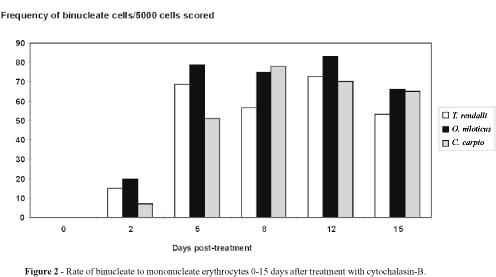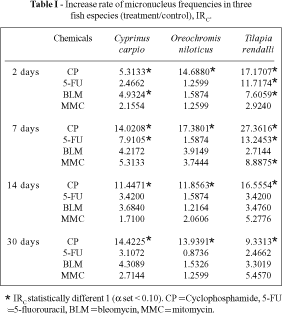Fish are often used for screening genotoxicity of water. For such programs, a knowledge of the sensitivity to clastogens, spontaneous micronucleus frequency and cell cycle kinetics of the target tissue is necessary. To investigate the pattern of inter-specific sensitivity to micronucleus induction three species of fish, Tilapia rendalli, Oreochromis niloticus and Cyprinus carpio, were exposed to the clastogens bleomycin (BLM), cyclophosphamide (CP), 5-fluorouracil (5-FU), and mitomycin C (MMC). The binucleate/mononucleate ratio in peripheral erythrocytes exposed to cytochalasin B was also used to evaluate the time-dependent response of micronucleus formation during hematopoesis in the kidney and the micronucleus peak in peripheral erythrocytes. Micronucleus frequencies induced by CP were significantly greater than their respective controls for the three fish species throughout all treatment periods. During the whole evaluation period (30 days) CP was also the most effective clastogen. In general, until the 14th day of evaluation period T. rendalii was the most sensitive species to clastogens. No difference in micronucleus frequencies among species was observed in the 4th evaluation (at the 30th day). A micronucleus peak was observed at the 7th day after treatment. After the 14th day the frequencies were stabilized. The cytochalasin B experiment was carried out to demonstrate that micronuclei induced in the young kidney erythrocyte cells were detected in the circulating blood 2-4 days later.





